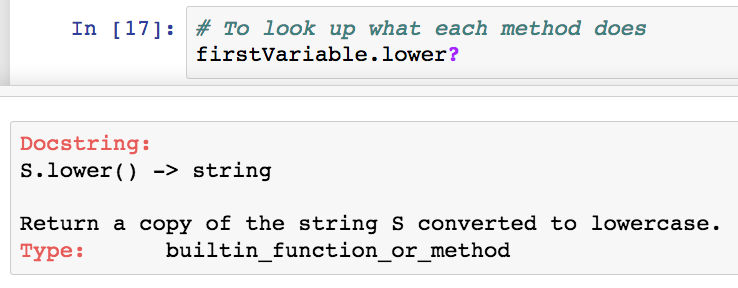初识 Python:Hello World 和字符串操作
开始之前,说一下本文中的代码和视频可以在我的 GitHub 上找到。
那么,让我们开始吧!如果你糊涂了,我建议你在单独的选项卡中打开下面的视频。
开始 (先决条件)
首先在你的操作系统上安装 Anaconda (Python)。你可以从官方网站下载 anaconda 并自行安装,或者你可以按照以下这些 anaconda 安装教程进行安装。
打开一个 Jupyter Notebook
打开你的终端(Mac)或命令行,并输入以下内容(请参考视频中的 1:16 处)来打开 Jupyter Notebook:
jupyter notebook
打印语句/Hello World
在 Jupyter 的单元格中输入以下内容并按下 shift + 回车来执行代码。
# This is a one line comment
print('Hello World!')

打印输出 “Hello World!”
字符串和字符串操作
字符串是 Python 类的一种特殊类型。作为对象,在类中,你可以使用 .methodName() 来调用字符串对象的方法。字符串类在 Python 中默认是可用的,所以你不需要 import 语句来使用字符串对象接口。
# Create a variable
# Variables are used to store information to be referenced
# and manipulated in a computer program.
firstVariable = 'Hello World'
print(firstVariable)

输出打印变量 firstVariable
# Explore what various string methods
print(firstVariable.lower())
print(firstVariable.upper())
print(firstVariable.title())

使用 .lower()、.upper() 和 title() 方法输出
# Use the split method to convert your string into a list
print(firstVariable.split(' '))

使用 split 方法输出(此例中以空格分隔)
# You can add strings together.
a = "Fizz" + "Buzz"
print(a)

字符串连接
查询方法的功能
对于新程序员,他们经常问你如何知道每种方法的功能。Python 提供了两种方法来实现。
1、(在不在 Jupyter Notebook 中都可用)使用 help 查询每个方法的功能。

查询每个方法的功能
2.(Jupyter Notebook 专用)你也可以通过在方法之后添加问号来查找方法的功能。
# To look up what each method does in jupyter (doesnt work outside of jupyter)
firstVariable.lower?

在 Jupyter 中查找每个方法的功能
结束语
如果你对本文或在 YouTube 视频的评论部分有任何疑问,请告诉我们。文章中的代码也可以在我的 GitHub 上找到。本系列教程的第 2 部分是简单的数学操作。
via: https://www.codementor.io/mgalarny/python-hello-world-and-string-manipulation-gdgwd8ymp
